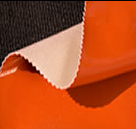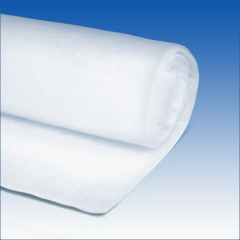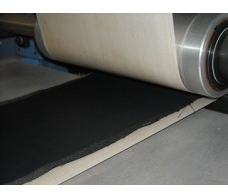Specialty Fibers, Fabrics, and Textiles Information
 Description
Description
Specialty fibers, fabrics and textiles are based upon a unique composition, weave, or technology, and are designed for specialized applications.
Applications
Specialty fibers, specialty fabrics and specialty textiles are used in a variety of industries and applications, including:
-
Aerospace
-
Apparel or clothing
-
Architecture and construction
-
Automotive and transportation
-
Chemical processing
-
Electrical
-
Electronic
-
Filtration
-
Marine
-
Medical
-
Electrostatic discharge (ESD) control
-
Shielding from electromagnetic interference (EMI)
-
Shielding from radio frequency interference (RFI)
Types
Fibers
Specialty fibers are bulk, chopped fibers or thin, continuous filaments that are supplied as any of the following:
-
Monofilaments
-
Multi-filaments
-
Threads
-
Strands
Fabrics
Specialty fabrics include:
-
Sleeves and wraps - Flexible, fibrous refractory fabrics for insulating pipes, tubes, ducts and other process components.
-
Knitted products - Consist of continuous fibers that are processed into a knitted structure with either two or three dimensions.
-
Braided structures - Used for tubular composite structures, thermal insulation, and in other applications.
-
Blankets or batts - Made of thick layers of fabric sheets.
Textiles
Specialty textiles include a variety of woven and non-woven products. Non-woven materials can be shaped into:
-
Mats of randomly-oriented fibers
-
Felt
-
Needlepunched cloth
-
Spun bound structures
-
Meltblown structures
Wet-laid and air-laid non-wovens are made from short-cut fibers and used to create highly uniform structures.
Carded and needlepunched non-wovens offer very high loft (low density) at very low cost.
Other types of specialty fibers, fabrics, and textiles include:
-
Roving
-
Yarn
-
Rope
-
Cordage
-
Webbing
-
Ribbons
-
Strapping
-
Tape
Materials
Specialty fibers, fabrics and textiles are made of many different natural and synthetic materials.
Natural
Natural specialty fibers are often made from plants such as
-
Cotton
-
Hemp
-
Jute
-
Fax
-
Linen
-
Leather
-
Silk
-
Wool
Synthetic
Synthetic specialty fabrics contain petroleum-based polymers and fibers.
Mineral wool is a category of industrial fabrics that includes slag wool, rock wool, and glass wool.
E-glass is a relatively inexpensive glass fiber that combines strength with high electrical resistivity.
S-glass®, a registered trademark of Owens Corning, is stronger than E-glass and has better properties at elevated temperatures.
Ceramic specialty textiles are made from alumina or zirconia fibers and are designed for high-temperature applications. Boron, quartz, silica, and silicon carbide (SiC) products are also available.
Metallic fibers have a shiny surface, high melting point, high hardness, and high thermal and electrical conductivity.
Material type choices for specialty fibers, fabrics and textiles also include:
-
Acetate and triacetate
-
Acrylic and modacrylic
-
Aramid and polyimide
-
Elastomeric
-
Fluropolymer
-
Nylon and polyamide
-
Olefin and polyolefin
-
Polybenzimidazole (PBI)
-
Poly-p-phenylenebenzobisoxazole (PBO)
-
Polypropylene
-
Polyphenylene sulfide (PPS)
-
Rayon
-
Styrene acrylonitrile (SAN)
-
Polyvinyl chloride (PVC)
Features
Selecting specialty fibers, fabrics and textiles requires an analysis of dimensions, properties, structural features, and applications.
Dimensions
-
Overall thickness
-
Overall width
-
Overall weight
-
Fabric weight
Properties
-
Use temperature
-
Breaking strength or maximum load
-
Thermal conductivity
-
Electrical resistivity
Structural Features
-
Chemical or fuel resistant
-
Electrically conductive
-
Electrically insulating
-
Flame retardant
-
Hydrophilic
-
Absorbent
-
Suitable for sound-proofing
-
Hydrophobic
-
Waterproof
-
Fireproof
-
Thermally insulating
-
Resistance to ultraviolet (UV) light or sunlight
Standards
A-A-55127 - Batting, synthetic fibers, polyester (unquilted and quilted)
A-A-50128 - Cloth, interlining, nonwoven
AATCC 111 - Weather resistance of textiles: Exposure to daylight and weather
References
Image Credits:
Mid-Mountain Materials, Inc. | Technical Glass Products, Inc. - OH | FuelCellsEtc
- Alabama
- Arizona
- California
- Connecticut
- Delaware
- Florida
- Georgia
- Illinois
- Indiana
- Massachusetts
- Maryland
- Maine
- Michigan
- Minnesota
- Missouri
- Mississippi
- North Carolina
- North Dakota
- New Hampshire
- New Jersey
- New York
- Ohio
- Oregon
- Pennsylvania
- Rhode Island
- South Carolina
- Tennessee
- Texas
- Utah
- Virginia
- Washington
- Wisconsin
- Acrylic / Modacrylic
- Aerospace
- Alumina
- Apparel / Clothing
- Aramid
- Architectural / Construction
- Automotive / Transportation
- Blanket / Batt
- Blended Fiber Structure
- Braided Product
- Carbon / Graphite
- Ceramic
- Chemical Bond/Binder Addition
- Chemical / Fuel Resistant
- Chemical Process
- Cleaning Wipes / Wicking
- Coated / Sized
- Cotton
- Cut Resistant / Bullet Proof
- E-glass
- Elastomeric (Elastoester / Spandex)
- Electrical / Electronics
- Electrical Insulation / Dielectric
- Fiber / Monofilament
- Filtration
- Fire Proofing / Thermal Protection
- Flame Retardant
- Fluoropolymer
- Geotextile
- Glass / Fiberglass
- HVAC
- Home Furnishings / Carpeting
- Hydroentanglement
- Hydrophilic / Absorbent
- Hydrophobic/Waterproof
- Industrial OEM
- Knitted Product
- Linen / Flax
- Marine
- Medical
- Metallic
- Microfiber
- Mineral / Glass Wool
- Natural (Cotton, Wool, etc.)
- Nonwoven Product
- Packaging / Material Handling
- Polyester
- Polyethylene / HDPE
- Polypropylene
- Printing / Graphic Arts
- Quartz / Fused Silica
- Rayon / Lycocell
- Rope / Cordage
- Roving / Yarn
- Sleeving / Wrap
- Sound Proofing / Insulation
- Material Type: Specialty / Other
- Type: Specialty / Other
- Spunbond / Meltblown Nonwoven
- Strands / Multi-filament
- Synthetic / Polymer
- Thermal Insulation / Fireproofing
- UL Approved / Listed
- Weather / UV Resistant
- Webbing (Ribbon / Strap)
- Wet-laid / Air-laid Nonwoven
- Wool
- Woven Product
- kevlar
- Hydrophilic
- kevlar fabric
- medical textile
- wrap blanket
- acoustic blanket
- Polyethylene fiber
- Hydrophobic
- Acrylic fiber
- flame retardant mat
- Polybenzimidazole
- PVDF fiber
- geotextile fabric
- heat shield
- High Temperature Insulation
- kevlar webbing
- PBI fabric
- construction blanket
- cut resistant blanket
- dielectric blanket
- kevlar plastic
- neoprene blanket
- olefin blanket
- Polyacrylate fiber
- Polyoxymethylene fiber
- polyurethane blanket
- PVC fiber
- aerospace blanket
- aramid batting
- braided textile
